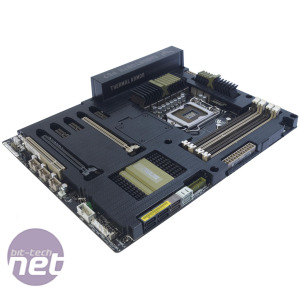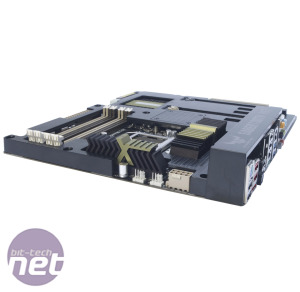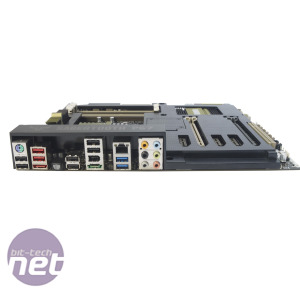
Performance Analysis
To give the Sabertooth P67 something to fight against we got in a new B3 version of the Asus P8P67. This board was our favourite P67 motherboard back in the days before Intel’s chipset blunder, so it should prove a stern test for the Sabertooth P67.At stock speeds, the Sabertooth P67 was quicker than the P8P67. Its overall score of 1,936 in our Media Benchmarks was a full 32 points quicker than the, admittedly cheaper, P8P67. Its score of 2,750 in our video encoding test was particularly impressive, as this was 70 points more than the junior board could manage.
Gaming was where the Sabertooth P67 came into its own, though, and its minimum frame rate of 76fps at stock speeds was a full 3fps quicker than the P8P67. SATA performance was good too, although this is something we’ve come to expect from Asus boards. The 353MB/sec read-speed it achieved over its SATA 6Gbps port was a dead tie with the P8P67, but the Sabertooth comes out on top thanks to its slightly quicker write-speed.
Overclocking the Sabertooth P67 is a relatively easy affair; the Asus EFI implementation is excellent, with related options grouped into sub menus and a simple clean interface. Unfortunately, we weren’t able to coax our test chip to the 5GHz we could manage with the P8P67, so we instead had to settle for a final clock speed of 4.9GHz.
A 4.9GHz overclock isn’t anything to sniff at, but it’s a disappointing result given that the cheaper Asus board managed a higher overclock with the same CPU. We played around with all the extra settings available in the board’s EFI, including Asus’ new VRM Spread Spectrum settings, but nothing could make the CPU stable above this clock speed.
At these settings, the Sabertooth P67 soldiered through our test suite, but its overall Media Benchmarks score of 2,662 was actually slower than the 2,691 returned by the P8P67. It lost out particularly badly in the Video Encoding test where it was previously strong - a 70 point lead turned into a 50 point deficit. This underlines the competitive nature of the LGA1155 market at the moment, and how much performance even budget motherboards are capable of offering.
Thankfully, the Sabertooth P67 was still strong when it came to gaming performance when it was overclocked. Its minimum frame rate of 82fps was a little quicker than that of the P8P67, although only by a tiny margin of 1fps.
Conclusion
The Sabertooth P67 is a unique motherboard. Its looks are likely to divide opinion and we remain sceptical about whether or not the Thermal Armor is anything but a massive heat trap. Its performance was variable too; it was quick at stock speeds, but it didn’t overclock as well as the cheaper Asus P8P67.While you may point out that its gaming performance was consistently excellent, this isn’t enough to secure it a recommendation on its own. It also lacks many of the features of similarly priced boards, such as on-board power and reset buttons or a POST error code readout.
We've had a lot of B3 stepping P67 motherboards in the labs over the last few weeks, and while we've published the Sabertooth P67 review first, we've seen cheaper boards that perform better. As a result, the Sabertooth P67 would be a good, rather than an exceptional, purchase.
-
Value15 / 25
-
Features22 / 30
-
Speed41 / 45


MSI MPG Velox 100R Chassis Review
October 14 2021 | 15:04












Want to comment? Please log in.